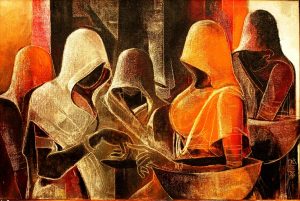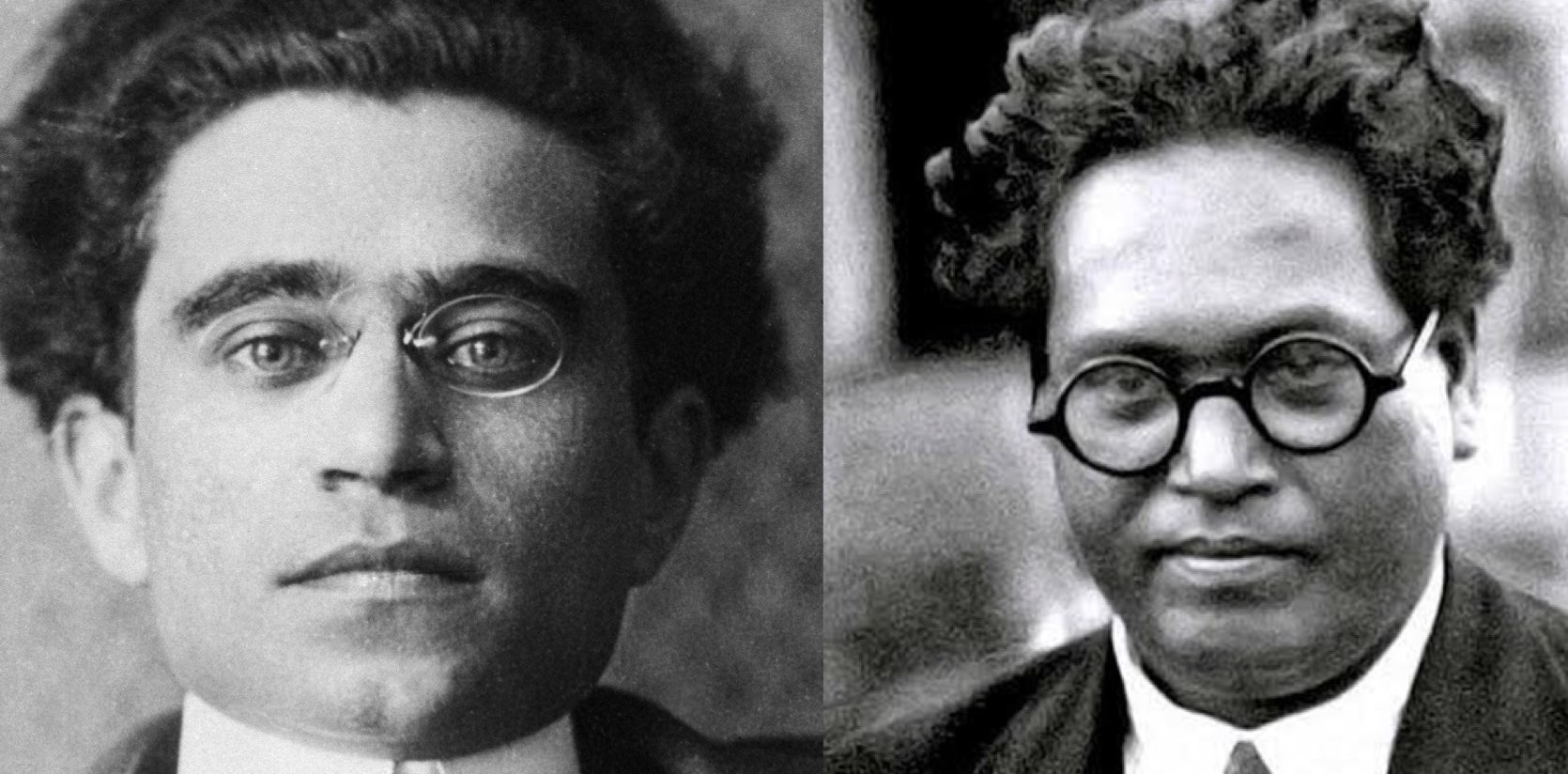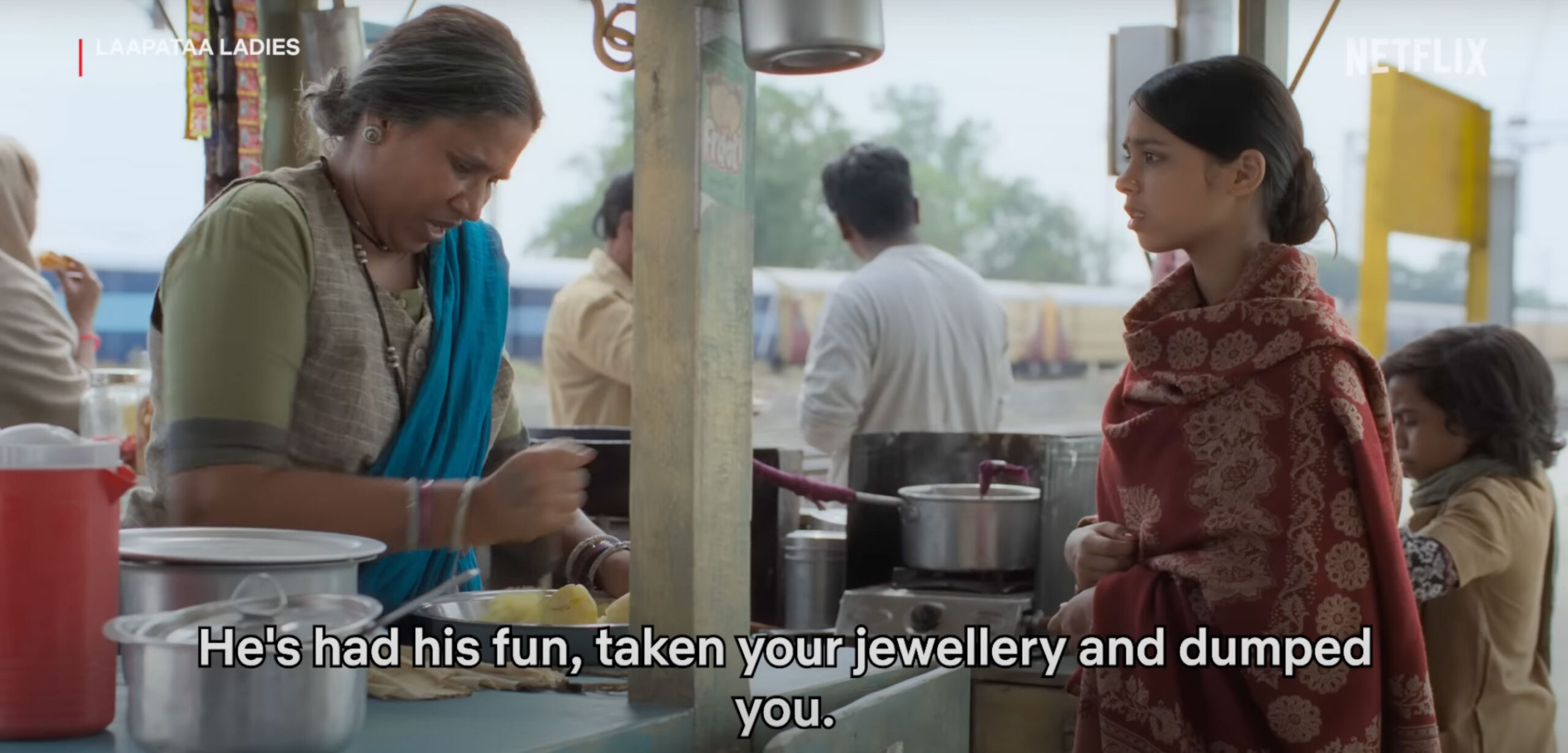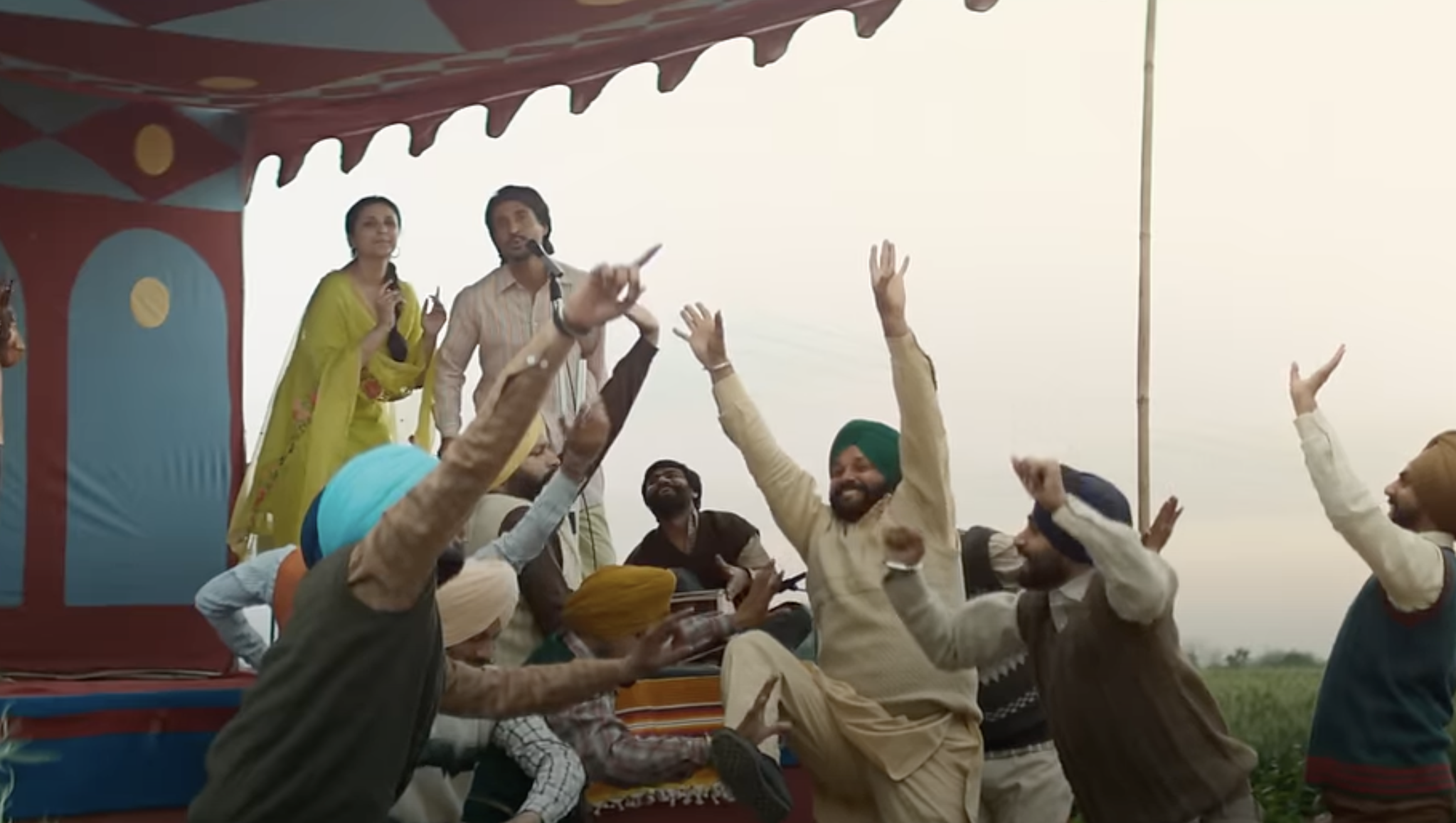Prema Negi in conversation with renowned Dalit writer Sharan Kumar Limbale:

How would you define Bahujan?
Bahujan means many people. In Uttar Pradesh, the Bahujan Samaj Party came into existence for the Bahujans. Kanshi Ram gave political clothing to the concept of Bahujans and tried to implement Babasaheb’s thoughts on the ground. The credit for defining and publicizing the word “Bahujan” in the Hindi belt must go to Kanshi Ram. In Maharashtra, many conventions have been organized to popularize the concept of Bahujan literature. However, those at the forefront of the Bahujan literary movement in Maharashtra are not SCs or STs but OBCs. A fairly large number of seminars, meetings and conventions on this issue have been organized in the state. In convention after convention, it was stressed that all backward and Dalit castes should be brought under the umbrella of Bahujans. The concept of Bahujan literature predates the Mandal Commission. Kancha Ilaiah, who comes from an OBC background, took a major initiative in this direction. His book Why I am not a Hindu subtitled “A Sudra critique of Hindutva philosophy, culture and political economy” makes it clear that every feature of Hindu religion is designed to oppress Dalitbahujans in one way or the other. This book should form one of the basic documents of the Bahujan discourse. In this book, Kancha Ilaiah also raises issues pertaining to women. He says that despite Saraswati being the goddess of knowledge in the Hindu religion, women were never allowed to study and despite Laxmi being the goddess of wealth, women never got property rights. In Maharashtra, Dalit Movement had begun with the movement of the Dalit Panthers in the 1970s. Dalit discourse began in the Hindi belt quite late and OBC discourse is in its initial stages.
After Dalit and women’s discourse, why is the need for OBC discourse being felt now?
People have woken up to the need for OBC discourse owing to the success of Dalit movements and literature. A new round of OBC discourse, inspired by Phule and Ambedkar, has begun. Phule and Ambedkar are the guiding lights of this discourse. The OBCs are gradually realizing that the savarnas used them as tools for centuries and that is also one reason why this discourse is marching ahead. The Mandal Commission not only gave a new direction but also a new tenor and a new face to the OBC discourse. This has also benefited the Dalit movement as the OBCs are now aligning with the Dalits and their coming together is strengthening the progressive forces. The expansion of education after Independence has led to writers emerging from the ranks of such castes and communities that could never boast of literary talents. As far as Bahujan literature is concerned, its format was more of a movement than of a consciousness. However, the Mandal Commission led to the spreading of the consciousness. As OBCs started getting educated, they felt the need for a movement. Around 60 per cent of the country’s population is OBC and today, they are conscious of their strength. In these circumstances, it would have been surprising had a discourse not begun.
Can a non-Dalit writer express the pain of the Dalits in the same way as a Dalit writer?
A non-Dalit writer can express the pain of the Dalits but with certain limitations. And there are reasons for this. The writings of non-Dalit writers are based on what they think; those of Dalit writers, on what they feel. This difference is palpable when one reads the writings of Dalit and non-Dalit writers. Over the last couple of years, innumerable stories and novels centred on Dalits have been written in Hindi and Marathi by non-Dalits, but these are more virtual than real. Now, what the Dalits are writing is based on their personal experience. But this is being projected in a wrong way. A message is being sent out that Dalit writers do not want non-Dalits to join the Dalit discourse or write anything about them. One question that naturally arises in this context is why this question was raised only after the Dalits began giving expression to their pain. Why was nothing written about the Dalits earlier? I want to know where these so-called pillars of literature were when the Dalits were being oppressed and suppressed. Why did they not spare a word for them? They are now conspiring to widen the chasm between the Dalits and the non-Dalits.
Why is the presence of women in Dalit Literature so small?
Women seem to be in the margins in Dalit Literature because Dalit women writers have yet to start writing in the true sense. Some Dalit women have become articulate. With time, their numbers will rise. Those who belong to the new generation are acquiring education. It would be natural for them to pick up the pen to document the pains and miseries, oppression and exploitation of their communities. But it is true that to date, Dalit women writers have not gone beyond autobiographical accounts. Secondly, a woman is a woman – no matter which community she belongs to. Dalit men are as patriarchal as non-Dalits. They ill-treat women as much as savarna men do.
Some say that OBC is only a political category.
Bahujan is a political category and so is Dalit. The literature of Dalits, however, is not only political. That is because we are raising our voice against tradition, caste, inequality, social evils and inertia. We are writing to build an equitable society, which definitely falls in the category of political writing. The backwards are not writing for the heck of it. Their writing has a definite objective. They have set out to achieve something.
How will dividing literature into different castes and camps affect democratic values?
This question sounds very logical but in reality it is not. When the Dalits are negating the caste system, who are the people who are branding their literature as Dalit-Backwards? It is not the Dalits but the savarnas who have divided literature into various castes and camps. We all have to work jointly to ensure that literature is not divided into castes and camps. But this does not seem to be happening. We are being branded because we are talking against the caste system.
How do you the view the initiative to bring the Shudra, Ati-Shudra, women’s and Tribal literature under one umbrella as part of the endeavour to establish the concept of Bahujan literature?Undoubtedly this is a very good initiative and it should be welcomed. I and many other thinkers believe that the tragedy of Shudras, Ati-Shudras, women and Tribals is the same. But as far as bringing the literature of all of them under the umbrella of Bahujan literature is concerned, it is an ideal which, like most ideals, is unachievable. And that is because of the cultural diversities. For instance, the Tribals are entirely different from others and their exploiter is the capitalist system, not society. Hierarchies accentuate these differences, and this is something that cannot be changed overnight. This can be understood by an example. Small plants cannot grow under a big tree. They need a separate place. Similarly, Shudras, Ati-Shudras, women, Tribals – they are different streams which will be able to grow and develop only if they are allowed to grow independently. Once they are developed, we can think about bringing them under one umbrella. But till now, they have not got an opportunity to grow. That is why they should be allowed to come forward in the way they want to; let them become vocal against injustice, let us leave them to themselves. What is most important is that they are breaking their silence. This will lead to the building of a new society. Every stream is giving birth to new heroes with new ideas, their circle is widening, their horizon is widening. In a sense, this is also an initiative to strengthen democracy.
It is often alleged that the historiography of Hindi literature did not objectively review and critique Kabir and dismissed him by describing him merely as a poet of “khandan-mandan” (one who puts forth only arguments and counterarguments). And in this context, the need for his objective assessment through OBC criticism is being emphasized. Your take?
Yes, that is true. But Kabir is a poet from another time, so is the novelist Premchand. They cannot be used as parameters for the evaluation of today’s OBC literature. This is modern Bahujan literature. How can Kabir be its parameter? Of course, Kabir can be critiqued and assessed in the historical context. As for the literature of the Backwards, it was written post Independence. Kabir lived much much earlier. Kabir was great. We should discuss him but not in the context of OBC literature. Ambedkar had said, “I have three gurus: Buddha, Kabir and Jotiba Phule.” But Kabir does not impress me much. He was basically a spiritual thinker. We are Dalit-OBC thinkers. Similarly, women’s discourse is also political, not spiritual. Bahujan literature is also not spiritual. The writers are writing about their rights, their oppression. I believe that linking Kabir with today’s Bahujan writers would not be doing injustice to Kabir but to the Bahujan writers. Today, we have to expand Bahujan Literature, critique it. We need not compare it with what Kabir had said. Those who want to confine Bahujan discourse to Buddha and Kabir want it to lose its way. Word is the biggest weapon of the writers from the OBC communities.
Jotiba Phule and Savitribai Phule were among those personalities who ushered in the modern age in India. They opposed the caste system and the brahmanical inertia. They advocated improvement in the economic condition of farmers. But why are both of them missing from the history of Hindi literature and criticism – and this, despite the fact that a large number of Hindi writers and critics were progressives?
If the Phule couple is missing from Hindi Literature it is because Hindi criticism has mainly been spiritual. It kept on revolving in the orbit of Hindu religion around Tulsi, Sur and Kabir. I don’t know when the critics and reviewers of Hindi literature will get rid of ancient spiritual gurus. That, even in the 21st century, the Untouchables cannot enter temples does not worry them. In a way, history and culture are tools of exploitation. A new India is being built after Independence but our Hindi writers are irresponsible. Independent India has failed to build an independent culture. Though I do not believe in God, I pray to him to free Hindi from Kabir and Premchand. Hindi literature is not idealistic. Much has been written against women, Dalits and Tribals in it. We have to reject it. A new way of thinking is not talked about. Our reviewers and critics do not know the problems that are confronting us. And that is why there is no new discourse. The Hindi critics have a closed mind; they are intellectual pygmies. Instead of grappling with cultural issues, they are obsessed with history and tradition. I reject them outright. Now, new critics should emerge from the ranks of Dalits, Tribals and women.

In Hindi literature, the Bhakti, progressive and Nai Kahani movements were considered part of the mainstream but the Dalit, women’s and Tribal literature – that laid the foundation of social justice and equality – is still on the margins. Why is it so?Whether it is Bhakti or progressive or Nai Kahani Movements, they were all not mainstream movements but movements of the savarnas. Does mainstream mean Brahmin? I say it is wrong to consider them mainstream movements. Savarnas were dominating literature till recently. But now, writers have changed, their caste has changed, the caste of literature has changed, and the caste of thinkers has changed. Democracy has demolished the culture of inertia that was thousands of years old. Brahmins have lost their privileges. And that is why they are talking of mainstream and back-stream. What should have happened was that what was written by the others should have been considered mainstream. I put what is described as the mainstream literature in the dock. It is the stream of caste, it is a stream of confusion, it represents savarna mindset, it glorifies old traditions and wrong practices. Since only one caste had a monopoly over the acquisition of knowledge, what its members said or wrote was declared the mainstream. With the expansion of education, writers arose from different castes and the bastions of domination crumbled. Now they are in a state of panic. I want to make it clear that I am not saying that all Brahmin writers are casteist. I am only against the brahmanical system, not progressive Brahmins. Progressive thoughts could not transcend the boundaries of caste. I do not give any importance to such a mainstream; we do not need it. When the real mainstream is built, it will include Dalits, women, Tribals and all others.
What is the difference in the Dalit consciousness of Hindi and Marathi literature?
There are significant differences between Hindi and Marathi writers. Marathi writers are associated with a movement, hence they are aggressive. The Hindi writers are government servants. They are obsessed with the “mainstream” mindset. Hindi literature is not a rebel literature; it lacks the aggressiveness of Marathi literature. Unlike Marathi, Hindi literature has not given voice to the Dalit movement. Secondly, Hindi writers have the advantage of being close to the capital. We have to struggle hard. We have to struggle even to get our books published. This can be understood with an example. Om Prakash Valmiki became well known in the Hindi belt by only writing one book Jhoothan. I got recognition in Hindi after writing over a hundred books.
Kabir, Phule, Gandhi, Bhartendu, Maithilisharan Gupta, Jaishankar Prasad – all are credited with laying the foundations of Bahujan Literature. But as far as women’s emancipation is considered, except Phule, the credentials of all others are under a cloud. To what extent would the women’s discourse centred on their emancipation agree with these thinkers?Definitely all of them have been sources of inspiration but as far as women’s discourse is concerned, I believe that only Phule and Ambedkar can show us the way. Phule does not need any certificate for what he did for the emancipation of women. It is another matter that few in the Hindi belt know about him. That is because Hindi literature never took him seriously.
Published in the Bahujan Literary Annual May 2014 issue of the Forward Press magazine
For more on Bahujan literature, visit http://www.amazon.in/dp/







